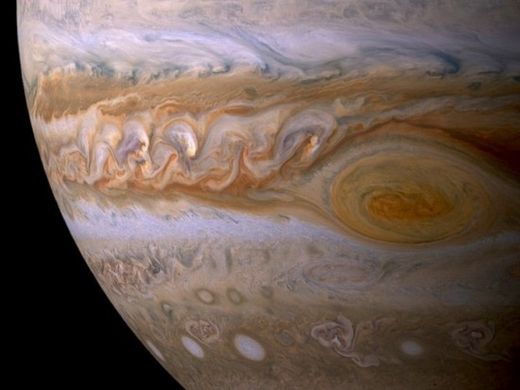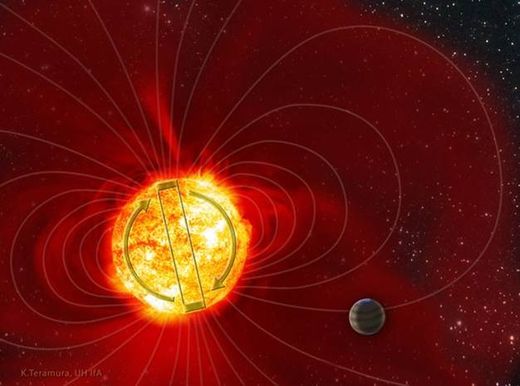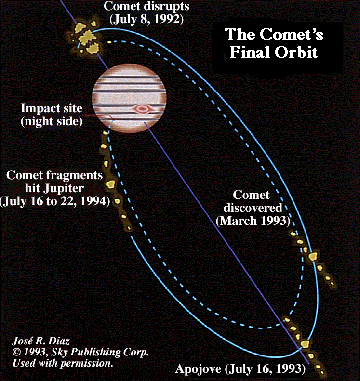
© NASA/Cassini Mission600 kilometer per hour winds on Jupiter.
Earth's average wind speed is approximately 56 kilometers per hour, with a maximum of 372 kilometer per hour gust recorded on Mount Washington, New Hampshire in 1934. Some isolated wind phenomena, such as tornadoes and hurricanes, can sustain average velocities of 480 and 320 kilometers per hour for short periods. The maximum 24 hour speed record of 205 kilometers per hour from 1934 still remains, however.
Tornadoes continue to be a mystery to consensus science, as well as Electric Universe advocates, although it seems that they are more like rotating electric discharges than anything else. The electric charges in a tornado are whirling at many meters per second, so they probably form an electromagnetic field called a "
charge sheath vortex."
It is commonly believed that weather is driven on Earth primarily by the Sun's thermal influence on the atmosphere. As we rotate beneath our primary, gases and dust absorb solar radiation at varying rates and in varying degrees. When any particular region heats up, the air expands and loses density, creating a relative low pressure area. Cooler air, being denser, will naturally flow into the bottom of the warm, low pressure region, causing an upwardly rotating convection cell to form.
Most weather systems on Earth are thought to be based on that simple kinetic explanation: winds blow when the cooler, denser air flows into the warmer, buoyant air.
The kinetic model of weather does not take into account the fact that planets much farther out in the Solar System have sustained winds that make those on our planet seem like gentle breezes. The average wind speeds on the gas giant planets are fantastic.
Jupiter's winds clock at 635 kilometers per hour around the Great Red Spot; Saturn's average wind speed is up to 1800 kilometers per hour; Uranus 900 kilometers per hour; and Neptune comes in at 1138 kilometers per hour. On Neptune the winds are blowing through an atmosphere that measures minus 220 degrees Celsius. Why is it that the most remote planets, receiving small fractions of the solar energy bathing Earth, are able to convert that small fraction into much larger effects?




